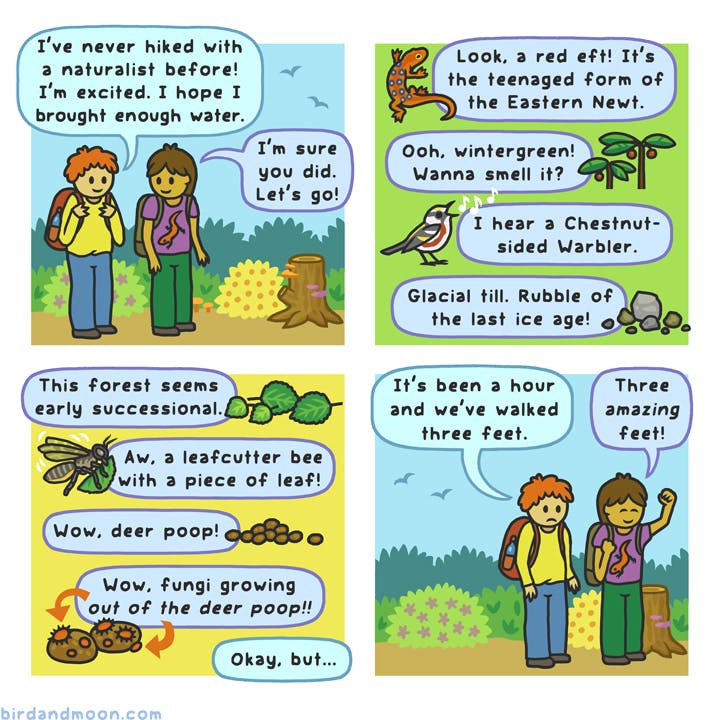Good morning BioBlitz Team!
Wow, what a week! This was our most productive BioBlitz yet. We beat our own records for number of observations and species. It wasn't quite enough to catch up to UNCW for most observations as they went all out this time around and took an early lead. However, we did find the most species (as far as things have been identified so far) and were able to crack the 1,000 milestone on that. Here are the current numbers:
AppState: 4,485 observations, 1,021 species (1,186 taxa), 193 observers (208 project members)
UNCW: 6,554 observations, 936 species (1,057 taxa), 207 observers (233 project members)
UNCG: 1,680 observations, 418 species (468 taxa), 63 observers (69 project members)
The top three observers with the most overall observations uploaded so far are maxbird1 and leighalobelia at AppState and emma_lemon at UNCW. Great job everyone!
These numbers are still subject to change as people may still be processing and uploading images and adding identifications to observations. Remember the date that counts is the date the picture was taken, not when it was uploaded to iNaturalist. So if you took pictures but didn't get around to uploading them yet, there's still time to do so and make them count this week.
There are a few things you can help with as we try to clean up the data set:
Identifying species:
If you would like to help with IDs, check out the identification guidelines. An initial ID will start things moving and more than 1 ID with over two thirds majority will give the observation a "community taxon" and make it research grade. Keep in mind observations do not need to be research grade to count for the BioBlitz. We want our data to be as scientifically accurate as possible, so make sure you can independently verify the IDs you're adding. The iNat Computer Vision suggestions aren't always right. If you don't know what something is or how to identify it, it's better to wait for someone more knowledgeable to push things to research grade.
Marking things cultivated/not wild:
The goal of the BioBlitz is to record the wildlife on campus, so only wild organisms should count. If something is obviously not wild (e.g. domestic animals, potted plants), they should be marked "captive/cultivated" on the identify page. On the observation pages, you would do this by marking No next to "Organism is wild" near the bottom of the page.
Adding annotations:
Making annotations is another great way to add value to observations. For example, for plants you can add whether they are flowering or fruiting, or for insects whether they are larvae, pupae, or adults. These annotations are searchable and allow researchers to e.g. quickly find all the plants that were in bloom or all the caterpillars observed during this month. This is also often easy to determine even if you are not confident enough to add species IDs.
Marking your favorites:
Last but not least, if you browse the pool of observations and come across some that you think are really cool or have really great pictures, add a star to fave the observation! This will include it in the set of most popular observations from the BioBlitz and will make sure we don't miss it when we pick contenders for the best picture winners. Tip: Nearly 4,500 observations is a lot to look through. However, you can use the filters or search by species to find your favorite taxa and see if anyone made observations of them.
Great turnout everyone! Stay tuned for more updates coming soon.









